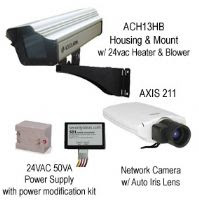
D2x Digital Slrcoolpix 8800 Actually Refers To Two Nikon Cameras
By Search EzineArticles.com
Addressing a D2X Digital SLRCoolpix 8800 search, this article provides a quick comparison of the Nikon D2X digital SLR and Coolpix 8800 cameras.
Nikon D2X Professional Digital SLR
Check out a Nikon D2X review or two and quickly realize this is a world class professional digital SLR. Instantaneous response and fast 37ms shutter lag allow the photographer to compose and take the photo instead of waiting for camera start-up, shutter or processing time.
The D2X sports a 12.4 megapixel DX format CMOS sensor capable of 5 FPS. Continuous mode can be increased to 8 FPS with a cropped field of view using 6.8 megapixels. The D2X SLR's 4-channel color readout and advanced image processing algorithms deliver truer color and higher processing speeds.
Additional features such as i-TTL Speedlight technology, sYCC color profiling, and Advanced 3D-Color Matrix Metering II make the D2X digital SLR a professional photographer's dream.
Nikon Coolpix 8800 Long-Zoom Digital Camera
An 8800 camera digital Nikon review search reveals a surprisingly compact mid-sized digital camera. With 8.0 effective megapixels and 10X optical zoom, this camera ranks at the top of Nikon's Coolpix line. Vibration Reduction circuitry compensates for camera movement, allowing shutter speeds up to 3 stops slower without image blur.
The 8800 offers a choice of built-in flash or external hot-shoe. Nikon's i-TTL flash technology delivers full flash zoom control with the SB-600 and SB-800 Speedlight units. In addition to fisheye, wide angle and telephoto converters, and other adaptors, Nikon 8800 filter options include neutral color, neutral density and polarizing filters.
Other Coolpix 8800 features include: 15 automated scene modes, 5 movie modes, and continuous shot modes up to 30 FPS. For the serious digital photography enthusiast the 8800 offers quality and features comparable to, but at a lower
cost than digital SLR's.
How Do These Cameras Compare?
Unlike many digital camera comparisons, comparing the D2X and Coolpix 8800 is not a true "apples-to-apples" comparison. Both models have a rugged but lightweight magnesium alloy body and high quality Nikkor lenses. And both feature i-TTL flash technology, multiple AF, scene, shot and exposure metering modes, plus aperture and shutter-priority settings.
The Coolpix 8800's rechargeable lithium-ion battery will take up to 240 shots per charge, while the D2X's (also lithium-ion) will take up to 2,000 photos on a single charge. DX Nikkor lenses for the D2X offer wide-angle views up to 180°, and the camera also accepts all conventional AF Nikkor lenses. The D2X also supports both WT-1A and WT-2A transmitters for wireless image transfer and full remote camera control from a computer.
But there's a huge difference in cost. The Coolpix 8800 is available from about $550 to $900, while the Nikon D2X price is closer to $4,000. For the professional who earns a living with his camera, the D2X digital SLR is one of the best and most reliable cameras available. But for the serious photographer that can't justify the D2X's cost, the Coolpix 8800 offers professional quality photos at an affordable price.










